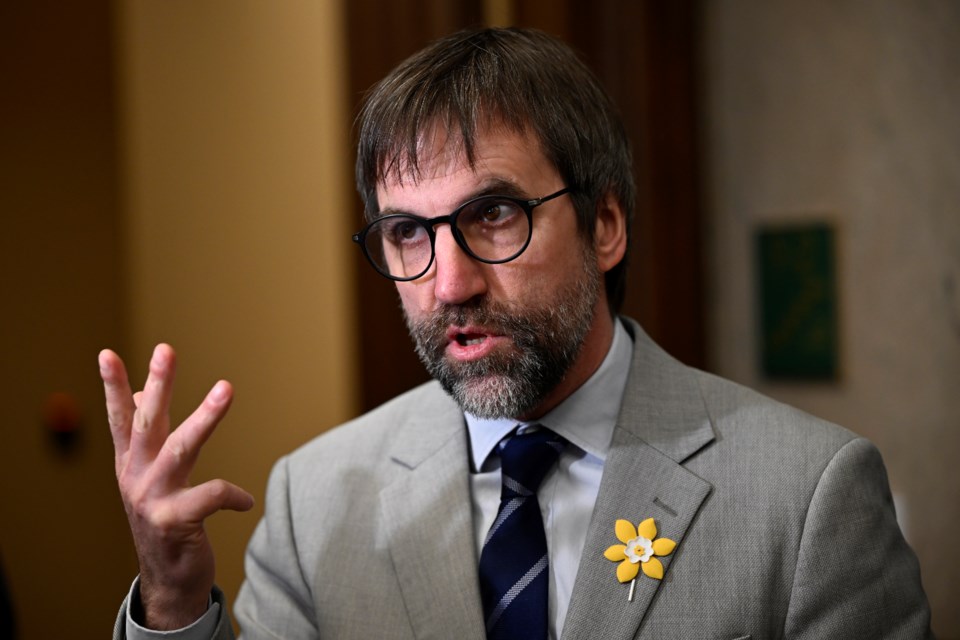This article originally appeared on The Trillium, a Village Media website devoted exclusively to covering provincial politics at Queen’s Park.
Federal Environment Minister Steven Guilbeault knows his words can move markets.
Guilbeault was recently chatting with an unnamed Toronto-based banker, he said, who shared some thoughts on what Guilbeault's latest Greenbelt comments did to the Ford government's plans to open up swaths of the once-protected area to housing development.
"He said to me, what you've done is send a message to the investment community, because this has now become a risky investment," Guilbeault told The Trillium during last week's federal Liberal convention in Ottawa.
"Because they're on notice now that the federal government might get involved in some projects. So it creates risks for projects and investors, and investors aren't particularly fond of risks," he said.
In late March, Guilbeault gave an interview to Toronto Life where he had some choice words for the Ford government and developers interested in the area.
"I say this to all parties involved in Greenbelt development: the federal government is paying very close attention. If you’re a developer thinking you’ve just struck gold and can start building tomorrow, know that the (federal) government could intervene."
A week before that interview was published, the Impact Assessment Agency of Canada (IAAC) launched a study to assess how Rouge National Urban Park would be affected by adjacent development.
"The objectives of the study are to understand the potential effects, including cumulative effects, of past, ongoing, and potential future development on the integrity of the park and on the park's management objectives," according to the news release.
Rouge National Urban Park is part of the Greenbelt's outer boundary and is close to the protected lands of the Duffins Rouge Agricultural Preserve (DRAP). The park and preserve connect to the Oak Ridges Moraine in the north, and Lake Ontario to the south, making a huge area of protected land.
In October 2022, with Bill 39, the strong mayors legislation, the Ford government repealed protections for the DRAP. A subsequent regulatory posting finalized the Ford government's controversial Greenbelt land swap later in the year.
The study's now underway. The IAAC — along with Parks Canada and the federal environment department — hopes to settle on the study's scope by sometime in June, and have it completed "as soon as possible."
The Trillium asked Guilbeault if the speedy study timeline is essentially a race against the Ford government's plans to see "significant progress" on Greenbelt development by the end of this year.
"Should these lands be removed from the Greenbelt, the landowners will be expected to develop detailed plans to build housing and move forward with the project quickly," according to one regulatory posting from the provincial government.
"It is the government’s expectation that construction of these new homes will begin on these lands by no later than 2025, and that significant progress on approvals and implementation be achieved by the end of 2023. "
"If these conditions are not met, the government will begin the process to return the properties back to the Greenbelt."
Guilbeault wouldn't bite.
"My motivation is quite simple," he said. "I want to protect as much land as possible, and especially sensitive lands in Ontario."
"As Environment and Climate Change minister, I have a responsibility to protect as much of Canada as we can. In fact, we've made a commitment to protect even more during the COP 15 meeting and that's exactly what I'm doing," he said.
Aside from the study, which can't actually stop anything, Guilbeault's only got a few tools at his disposal, and they can only be used once development starts.
"Most of the tools I have — whether they're impact assessment or species at risk — can be deployed once specific projects are being announced. Until those projects are announced, it's a bit more difficult for us to get involved," he said.
Rouge Park isn't the only environmentally sensitive area subject to development pressure under the Ford government that Guilbeault's looking to further protect.
During the public hearings on the Rouge Park study, Guilbeault said the federal government is considering if there are "other areas of the Greenbelt where we could do something similar as to what we're doing with Rouge Park."
"The Niagara Escarpment is another area we're looking at right now, trying to see do we have similar levers as the ones we have for" Rouge Park, he said.
The Niagara Escarpment is another piece of protected land, one that's been recognized as a World Biosphere Reserve site by the United Nations. The province first put a protection plan in place in the 1970s, but the area has come under pressure in the decades since.
In her 2022 annual report, Ontario's auditor general found the province — not just under Ford's Tories — hasn't done enough to protect the sensitive area.
In 2017, the plan to manage the area was changed to allow development in places that will harm endangered species' habitats. Decades of funding cuts have left the agency tasked with overseeing the area unable to fulfil its duties, and in the past five years, just 19 of 1,661 development permits have been denied — some of which went against the area's management plan.
Between the Greenbelt and the Niagara Escarpment, Guilbeault admitted, "Obviously, there are some tensions on some issues with the Ontario government."
He did, however, mention areas of tension where there's been progress.
"I think the issue of caribou is a point of contention, but very happy that the Ontario government has announced $30 million for the conservation of caribou," he said.
"The reality of politics is that sometimes we will argue publicly about things, and then we sit down at the table and we still have to try and make things work."



